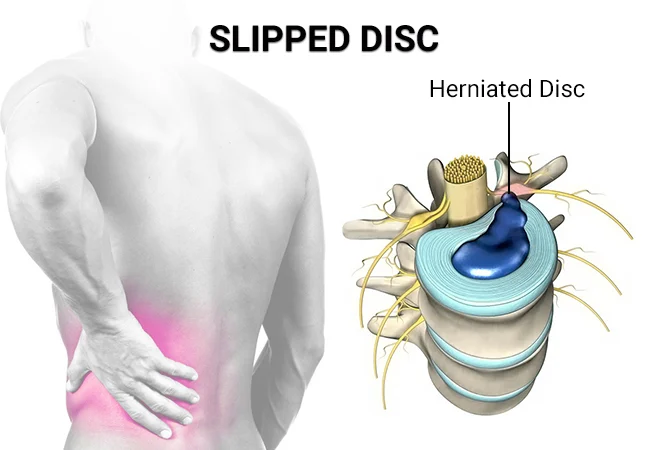Estimated reading time: 0 minutes
If a disc in your lower spine bulges or tears, you may suffer pain in your lower back and/or leg. Here are three unique signs of a herniated or bulging disc to help you determine the source of your lower back pain:
1. Discomfort while sitting
Sitting is a very taxing action for your lower spinal discs. If you have a herniated or bulging disc, the additional pressure within your disc may cause the bulge to become more visible, exacerbating your lower back pain when you sit.
2. Radiating pain down your leg (sciatica)
Lower back discs typically herniate or protrude in the posterior (back) and/or lateral (side) area, near the spinal nerve roots. Herniated discs can harm these nerve roots in one or both of the ways listed below:
Compression performed directly. When the internal contents of a bulging or leaking disc immediately push on a spinal nerve root as it exits the spinal canal.
Chemical-induced irritation. The region around the nerve root may become inflamed and irritated when a herniated disc leaks acidic chemical irritants from the disc substance.
The function of the damaged nerve root is then affected, and you may feel burning pain, numbness, weakness, and/or tingling along the front and/or back of your thigh, leg, and/or foot. The medical word for these symptoms is sciatica. Typically, sciatica symptoms and signs affect just one leg at a time.
3. Some activities aggravate pain
Certain activities, for example, may increase your lower back pain and/or sciatica.
Forward and downward bending
Lifting a huge object in order to push or move something heavy
Coughing and sneezing
Lumbar herniated disc pain frequently arises unexpectedly. Most of the time, there is no evident reason for the pain, such as an accident or traumatic incident. Nonetheless, the discomfort is sudden.
This sickness can be terribly painful, although the symptoms are usually transient. Even if they did not receive medical treatment, over 90% of people who suffer from acute lumbar disc herniation report that the pain has subsided within 6 weeks.
When should you seek medical attention and when should you avoid it?
Consult your doctor if you have any of these three herniated disc symptoms. Your doctor may recommend a combination of nonsurgical treatments, such as pain medicines and a guided physical therapy programme, as well as referral to an interventional pain specialist for image-guided lumbar injections, to help reduce inflammation and alleviate pain.
If you have trouble controlling your bowel and/or bladder motions, numbness in your inner thigh and genital area, or difficulty starting urination, see your doctor straight once. These symptoms and signs may indicate cauda equina syndrome, a serious medical emergency caused by severe lower back disc herniations.
The Benefits of Non-Surgical Ayurvedic Care for Slip Disc
The treatment restores harmony and balance to the spinal column.
Panchakarma is an incredibly beneficial treatment for nourishing the bones and tissues. It lowers inflammation and helps faster slip disc repair.
Unlike surgical methods, Ayurvedic medicine cleanses the body and restores its balance, encouraging prosperity and good health.
Panchakarma soothes both the mind and the body.
Our herbal medicines, in conjunction with yoga and Panchakarma, can help to strengthen the damaged area and avoid future trouble.
Panchakarma procedures are extremely efficient in treating rheumatism, sciatica, backaches, detoxification, and immune system repair.
Yoga is a powerful pain reliever. Ayurvedic treatment is a great alternative for prolapsed discs.
We treat the patient’s condition as well as the underlying cause of the problem.
Ayurvedic medicine can effectively heal a bulging disc. In contrast, surgical treatment does not guarantee that the spinal disc injury will not reoccur.
According to studies, people who chose non-surgical therapies experienced a lengthy procedure but received excellent results.
The majority of patients have relief from non-surgical slip disc treatment within one to two months.
Related-
Know more about Ayurvedic Spinal Disk & Radiculopathy Treatments.
GET IN TOUCH


Recent comments